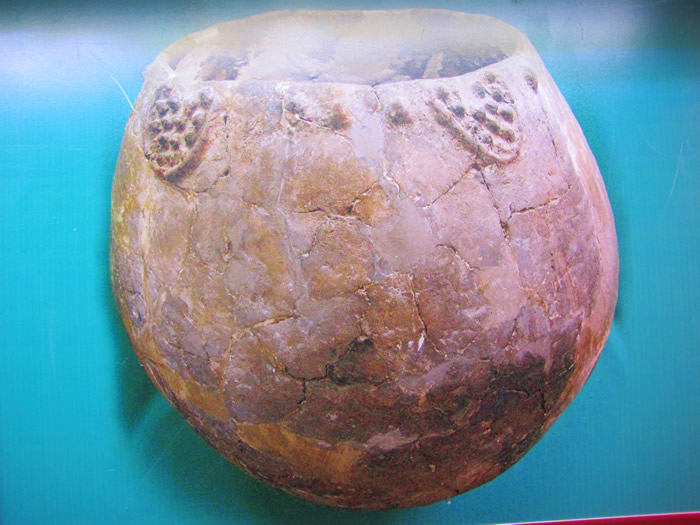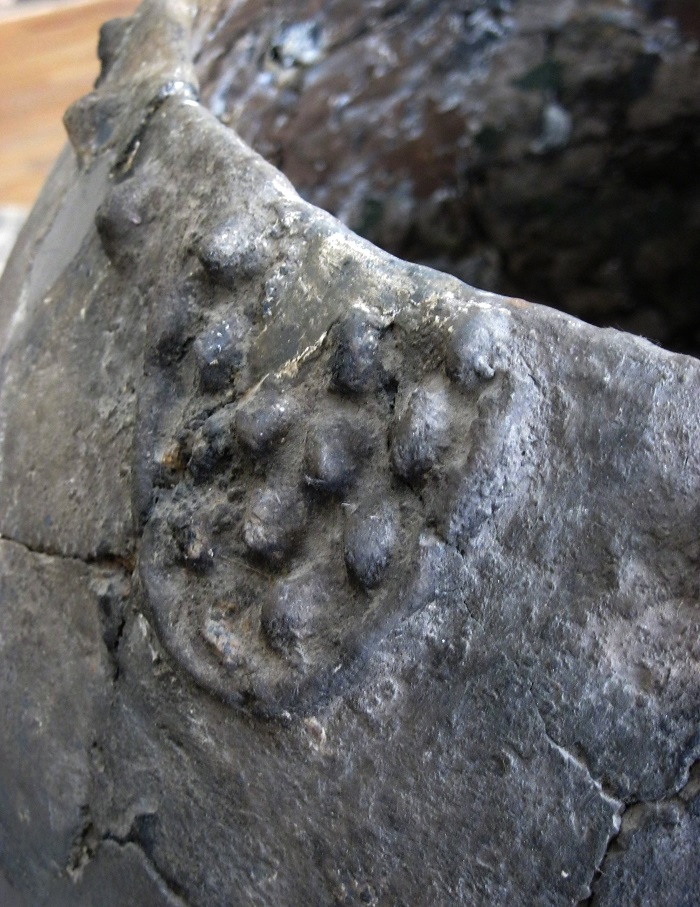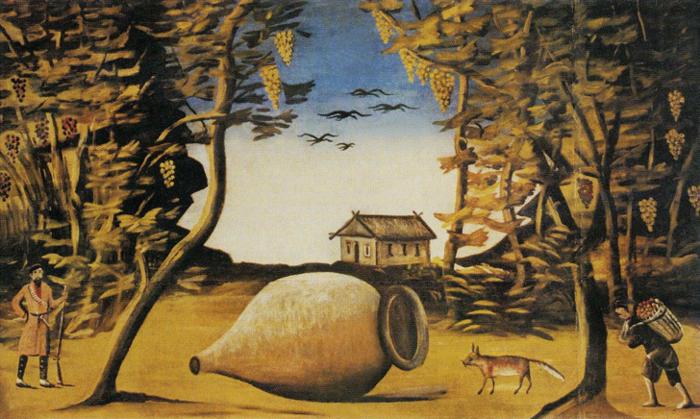'World's oldest wine' found in 8,000-year-old jars in Georgia
MINDIA JALABADZE / GEORGIAN NATIONAL MUSEUM

Scientists say 8,000-year-old pottery fragments have revealed the earliest evidence of grape wine-making.

The earthenware jars containing residual wine compounds were found in two sites south of the Georgian
capital, Tbilisi, researchers said.
Qvevri
(The Jar)
filmed on Luigi Pirandello's novel.

Some of the jars bore images of grape clusters and a man dancing. Previously, the earliest evidence of wine-making was from pottery dating from about 7,000 years ago found in north-western Iran.

The latest finds were published in the journal Proceedings of the National Academy of Sciences (PNAS).

We believe this is the oldest example of the domestication of a wild-growing Eurasian grapevine solely for the production of wine
said co-author Stephen Batiuk, a senior researcher at the University of Toronto.
Wine is central to civilisation as we know it in the West. As a medicine, social lubricant, mind-altering substance and highly valued commodity, wine became the focus of religious cults, pharmacopoeias, cuisines, economies and society in the ancient Near East.

Traditional methods
The pottery jars were discovered in two Neolithic villages, called Gadachrili Gora and Shulaveris Gora, about 50km (30 miles) south of Tbilisi, researchers said.

Telltale chemical signs of wine were discovered in eight jars, the oldest one dating from about 5,980 BC.

Large jars called qvevri, similar to the ancient ones, are still used for wine-making in Georgia, said David Lordkipanidze, director of the Georgian National Museum who helped lead the research.

Mr Batiuk said the wine was probably made in a similar way to the qvevri method today

where the grapes are crushed and the fruit, stems and seeds are all fermented together
Il Bisbetico Domato
(The Taming of the Scoundrel) film.

Previously, the earliest evidence of grape wine-making had been found in the Zagros Mountains of Iran and dated to 5,400-5,000 BC.
In 2011, a wine press and fermentation jars from about 6,000 years ago were found in a cave in Armenia.
The world's earliest non-grape based wine is believe to be a fermented alcoholic beverage of rice, honey and fruit found in China and dating to about 7,000 BC.

***

